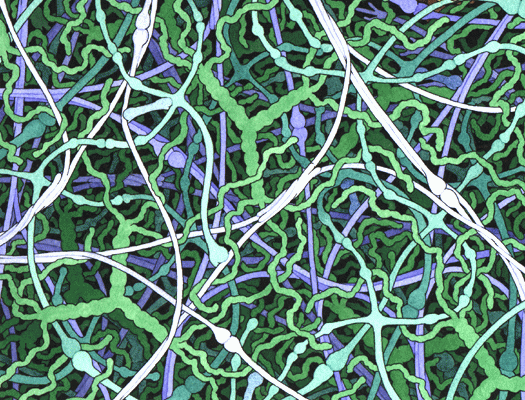|
Inhaltsübersicht | Nanomaschinen | Moleküle | Programme | Kurse | Fun | Links |
||
| > |
Collagen
Ropes and Ladders
We make many different kinds of collagen, which form long ropes and tough sheets that are used for structural support in mature animals and as pathways for cellular movement during development. All contain a long stretch of triple helix connected to different types of ends. The simplest is merely a long triple helix, with blunt ends. These "type I" collagen molecules associate side-by-side, like fibers in a rope, to form tough fibrils. These fibrils crisscross the space between nearly every one of our cells.This illustration depicts a basement membrane, which forms a tough surface that supports the skin and many organs. A different collagen--"type IV"--forms the structural basis of this membrane. Type IV collagen has a globular head at one end and an extra tail at the other. The heads bind strongly together, head-to-head, and four collagen molecules associate together through their tails, forming an X-shaped complex. Using these two types of interactions, type IV collagen forms an extended network, shown here in light blue. Two other molecules--cross-shaped laminin (blue- green) and long, snaky proteoglycans (green)--fill in the spaces, forming a dense sheet.
Next: Interaktive 3D-Animation
Previous: Exploring the Structure

Last changed by: A.Honegger,